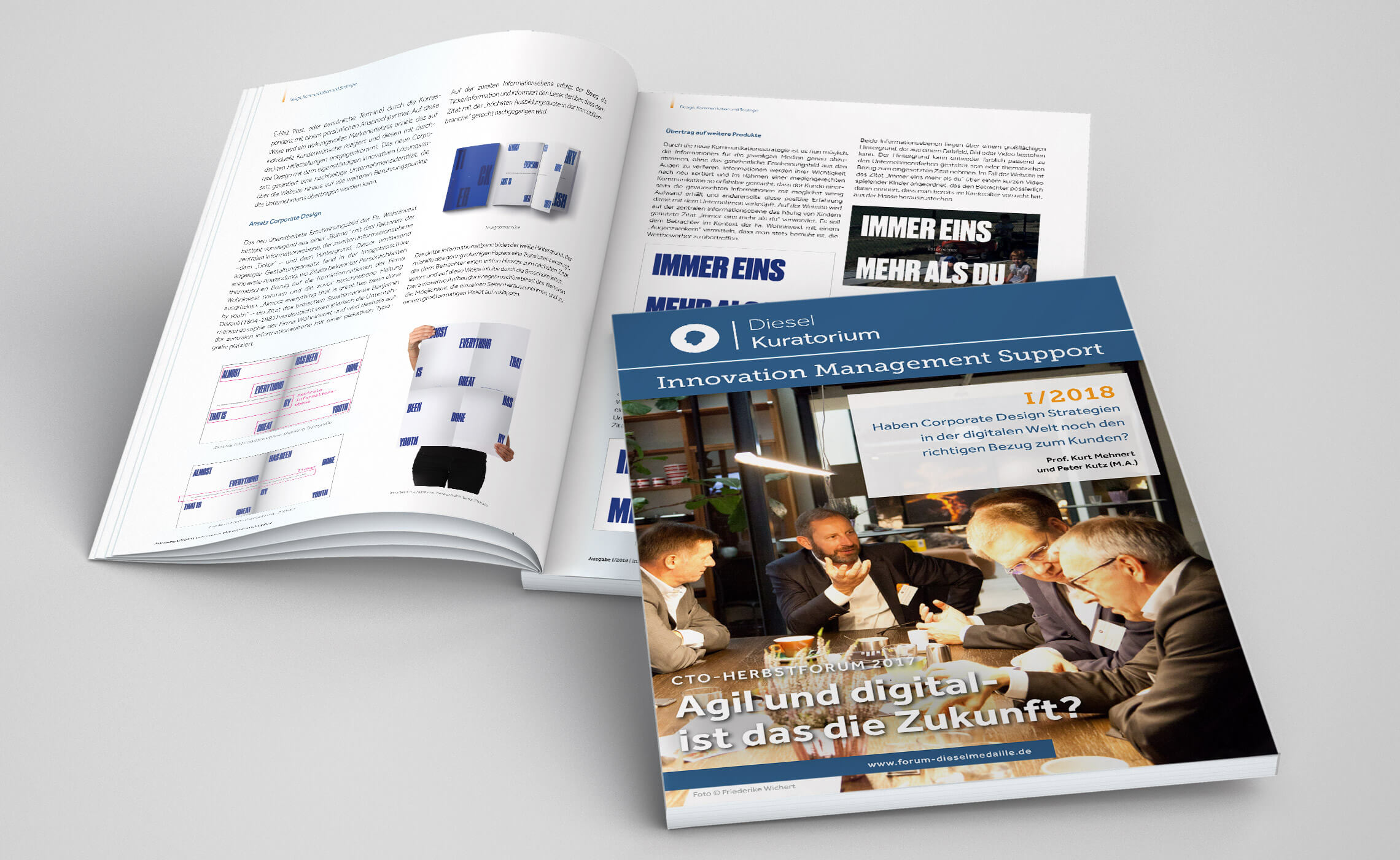
Corporate Design Strategies, Article in Innovation Management Magazine 1/2018
Deutsches Institut für Erfindungswesen (DIE) e. V., München
Wohninvest Holding GmbH, Fellbach
Do corporate design strategies in the digital world still have the right connection to the customer?
Written by Prof. Kurt Mehnert, Peter Kutz (M.A.)
The ever faster and more direct communication between companies and customers in times of digitalization poses new challenges to companies.
Previous analogue points of contact are increasingly being replaced by digital ones and require an even stronger focus on the customer himself for successful brand communication. A case study from the real estate industry.
The challenge
The process of digitization, which has taken the industry by storm over the last ten years with a wave of automation of workflows through the use of the Internet and numerous mobile devices (mobile phones, laptops, tablet PCs, etc.), increasingly demands the ubiquitous availability and permanent connectivity of companies to their customers. The implementation of "intelligent" systems in the field of customer service can favour contact with customers through personal, direct and fast communication as well as negatively affect customer loyalty through excessively automated processes.
For reasons of efficiency, numerous companies have developed pre-programmed Questions and Answers forums that offer a potential solution for customer questions anticipated in advance. Some companies even go so far as to pretend to have a personal contact in the form of a software-based account manager who uses algorithms to filter out individual customer needs from a wealth of accumulated data.
The option of a carefree and correlative communication between company and customer has become just as decisive for a successful and customer-specific marketing strategy as the brand itself.
Today's customer wants to be understood as an active business partner and attaches great importance to personal empowerment (increased autonomy and self-determination), which can be significantly strengthened through active, mutual dialogue. The points of contact between companies and customers come to the fore and increasingly replace the logo as the main sender of the brand.
A consistently designed website that can be operated intuitively or simply a selection of direct extension numbers that offers an overview of the right contact persons are methods with which companies can make their communication considerably more transparent using little effort. They not only make it easier for customers to make initial contact, but also contribute to long-term emotional customer loyalty. The encounter between company and customer in the form of an actual live communication is nowadays a rare commodity whose advantages have to be further developed in the digital age: Analog media such as brochures, stationery and telephones must be linked with digital media such as the Internet, e-mail and social media in order to create a closed and effective brand experience that specifically addresses the needs of individual customers.
Differentiating competition
The company Wohninvest Holding GmbH, founded in 2005 by Mr. Harald Josef Panzer, was confronted with the question of how its own communication channels and points of contact with the customer should be designed in the future after continuous growth.
During an in-depth research and analysis of the online presence of competing companies, it inevitably became apparent that many company websites contain a wealth of information that the customer can leave to study on his own. Such an approach may seem cost- and time-saving for the entrepreneurial side at first glance, but the loss of direct customer contact due to the inefficient way in which information is conveyed would be an obvious consequence.
The Internet appearance of many enterprises, which decides in the meantime often on the primary and sometimes only impression of the same, works sometimes impersonally, variedly and is therefore little memorable. A customer, to whom one presents pure enterprise facts, so that he must appropriate these himself, will certainly not be willing to bring his confidence to this enterprise. Thus the emergence of an emotional connection between company and customer - a decisive competitive advantage in today's consumer society - is prevented from the outset. If, moreover, the user-friendliness does not live up to the customer's expectations (e.g. if, after an extensive search, he does not find the desired information on the website), an antipathy towards the company that is difficult to revise can immediately develop.
In the real estate industry, companies prefer to focus on facts and figures relating to real estate assets, sales transactions or the number of employees as an indicator of success in their public image. The highlighting of these data is to serve the confidence stabilization and - production of old and new customers.
However, this strategy mainly accentuates the company's past achievements. In a highly competitive market, where suppliers have to prove their performance and reliability time and again, this type of communication is still frequently used.
In contrast, Harald Josef Panzer as CEO of Wohninvest, together with Mehnert Corporate Design, took a completely new approach by radically focusing the company's external image on core values! The customer can devote his unlimited attention to defining a common goal, a common attitude. This approach can be perfectly described in the words of Antoine de Saint-Exupéry (1900-1944): "If you want to build a ship, don't call people together to collect wood, distribute tasks and divide up work, but teach them the longing for the big, wide sea". By leading a common attitude or goal forward, efforts to build customer confidence pay off much more quickly and emphatically.
For implementation, this means that the most important information is condensed into a core and listed under the company's mission statement. If the customer needs further information, he receives it via additional communication channels (telephone, e-mail, post, or personal appointments) through correspondence with a personal contact. In this way, an effective brand experience is achieved, which reacts to individual customer wishes and accommodates them with well thought-out assistance.
The new Corporate Design with the independent innovative solution approach guarantees a lasting enterprise identity, which can be transferred beyond the Website to all further points of contact of the enterprise.
Ansatz Corporate Design
The newly revised appearance of Wohninvest consists mainly of a "stage" with three factors: the central information level, the second information level - the "ticker" - and the background.
This comprehensive design approach was first applied in the image brochure, where quotes from well-known personalities refer thematically to the core information of Wohninvest and express the attitude described above.
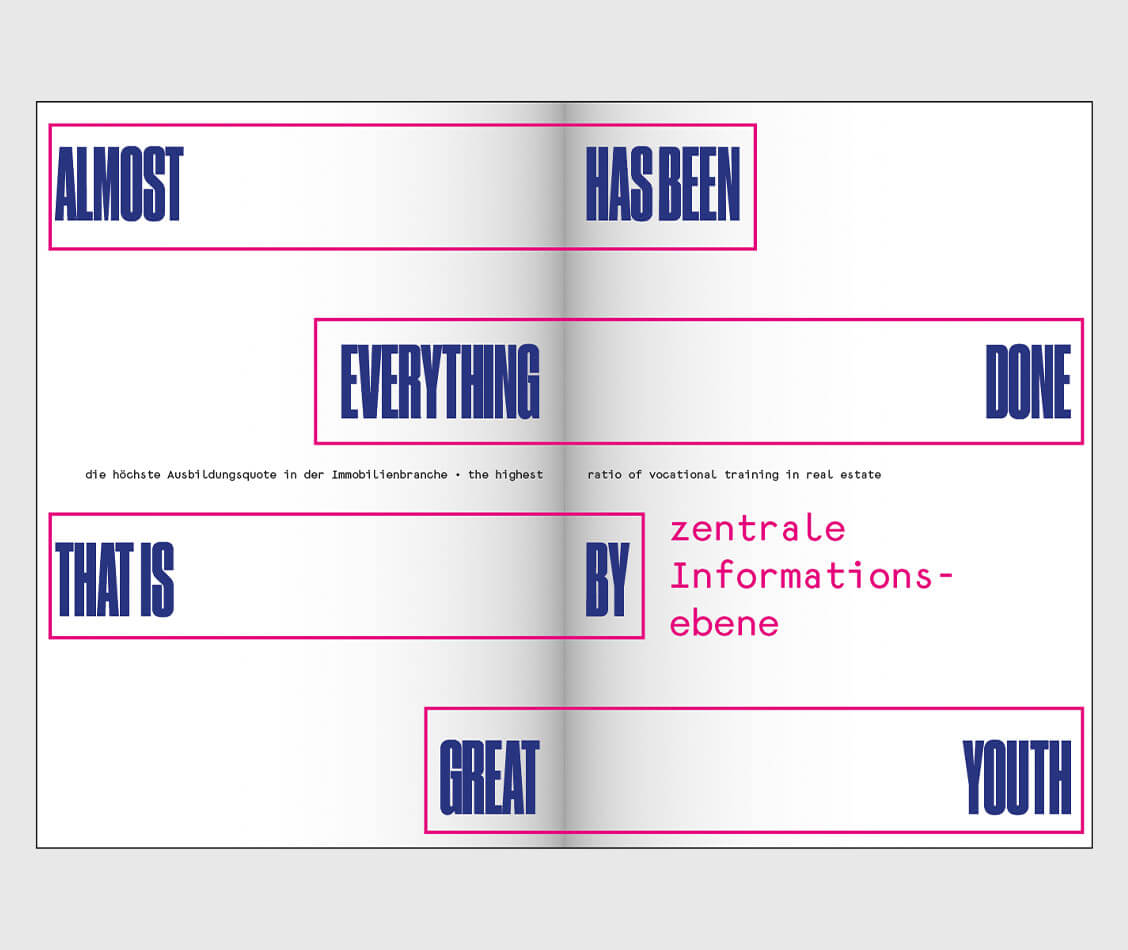
"Almost everything that is great has been done by youth" - a quote from the British statesman Benjamin Disraeli (1804-1881) exemplifies the corporate philosophy of Wohninvest and is therefore placed on the central information level with a striking typography.
On the second information level, the receipt is provided as ticker information and informs the reader that the quote with the "highest training quota in the real estate sector" is fairly followed up.
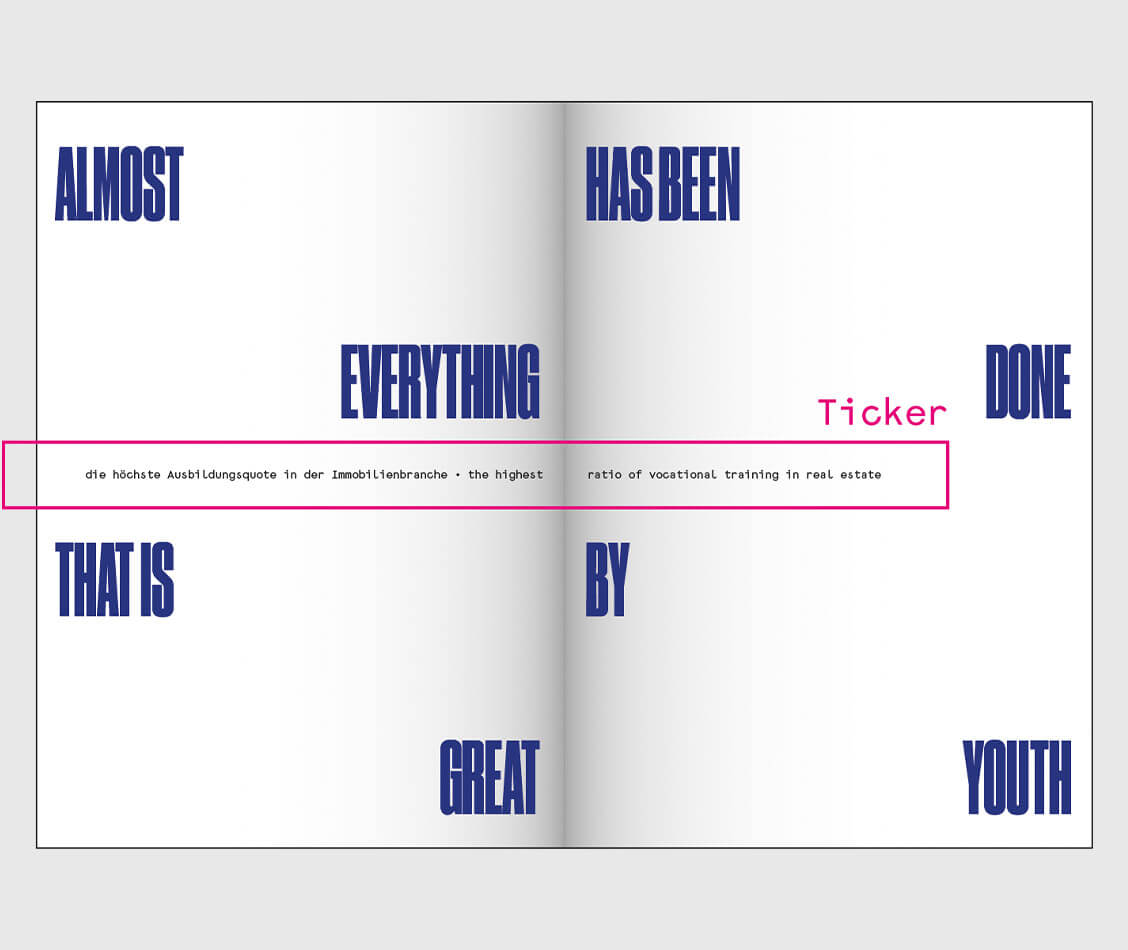
The third level of information is the white background, which uses the low-volume paper to create a translucency that provides the viewer with a first hint to the next quotation and thus intuitively guides him through the brochure.
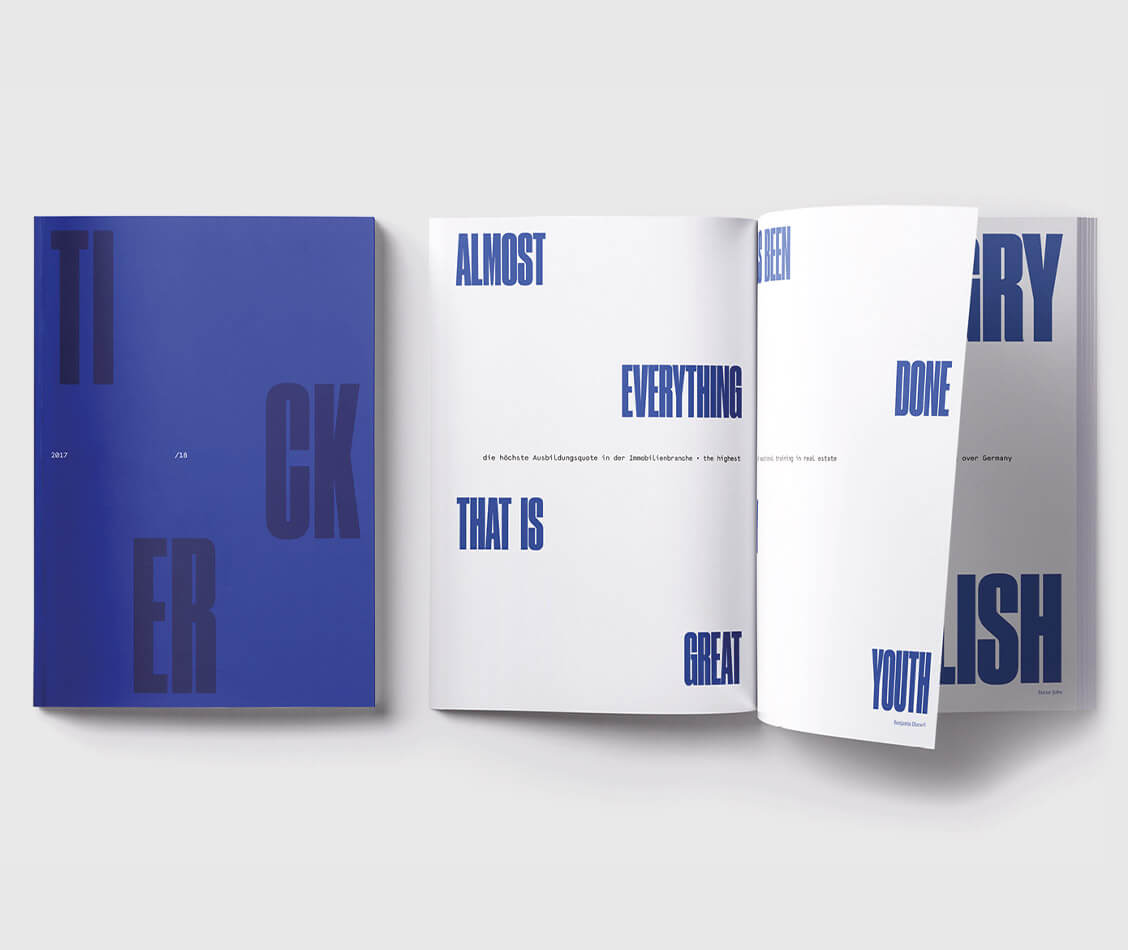
The innovative structure of the image brochure also offers the possibility of removing the individual pages and folding them up to form a large-format poster.

Transfer to other products
Thanks to the new communication strategy, it is now possible to precisely coordinate the information for the respective media without losing sight of the holistic appearance.
Information is re-sorted according to its importance and within the framework of a media-friendly communication made experienceable in such a way that on the one hand the customer receives the desired information with as little effort as possible and on the other hand this positive experience is linked directly with the company.
Website
On the website, at the central information level, the quote "Always one more than you", often used by children, is used. In the context of Wohninvest, it is intended to convey to the viewer with a "wink" that they are always striving to outperform their competitors.
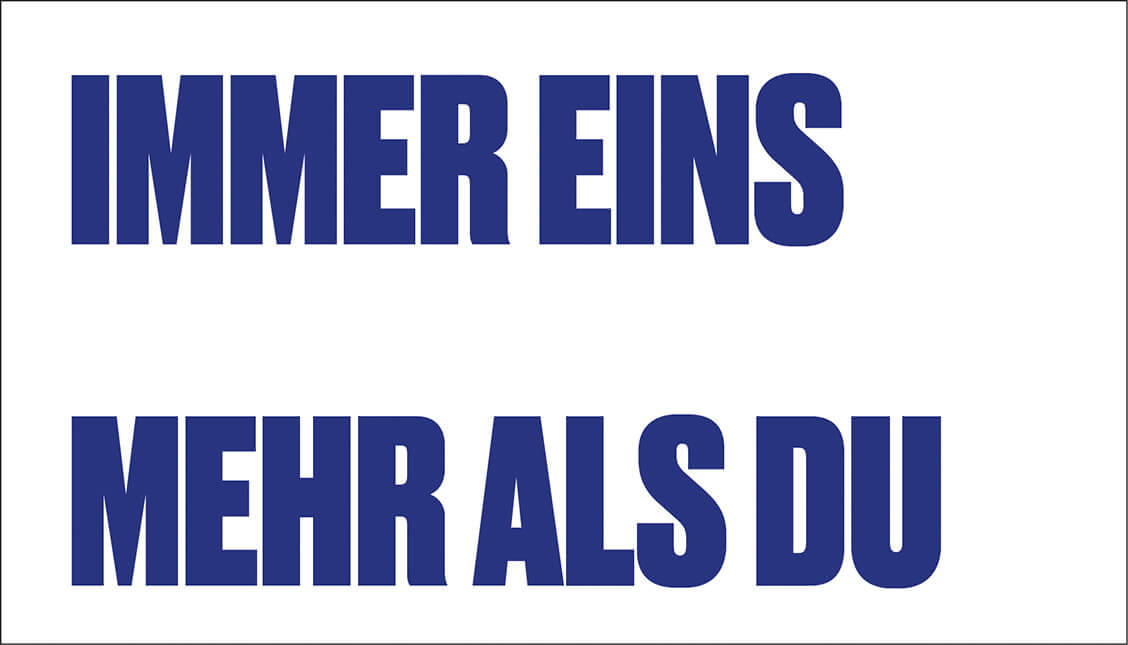
On the second level of information, a so-called "ticker" is used, which represents more detailed information in relation to the rest of the typography, but which catches the viewer's eye solely through its positioning and different typeface. This results in two levels of information that can either complement each other or stand alone. Using the website as an example, the "Company" link offers the customer the opportunity to obtain further information about the company after the curiosity has been aroused by the quotation.
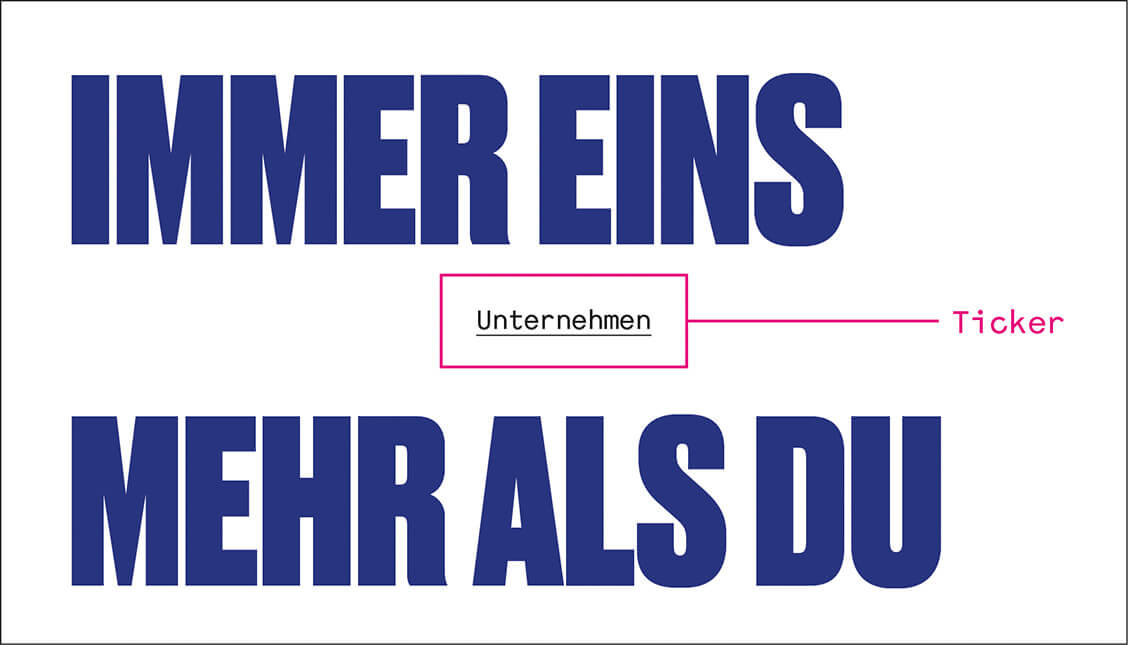
Both levels of information lie over a large background, which can consist of a colour field, image or video. The background can either be colour-matched to the corporate colours or it can refer to the quotation used. In the case of the website, the quote "Always one more than you" is arranged above a short video of children playing, which reminds the viewer in a funny way that they tried to stand out from the crowd as children.
In the overall context of the website, the way in which this page is presented differs markedly from the competition and is therefore particularly memorable for the viewer.
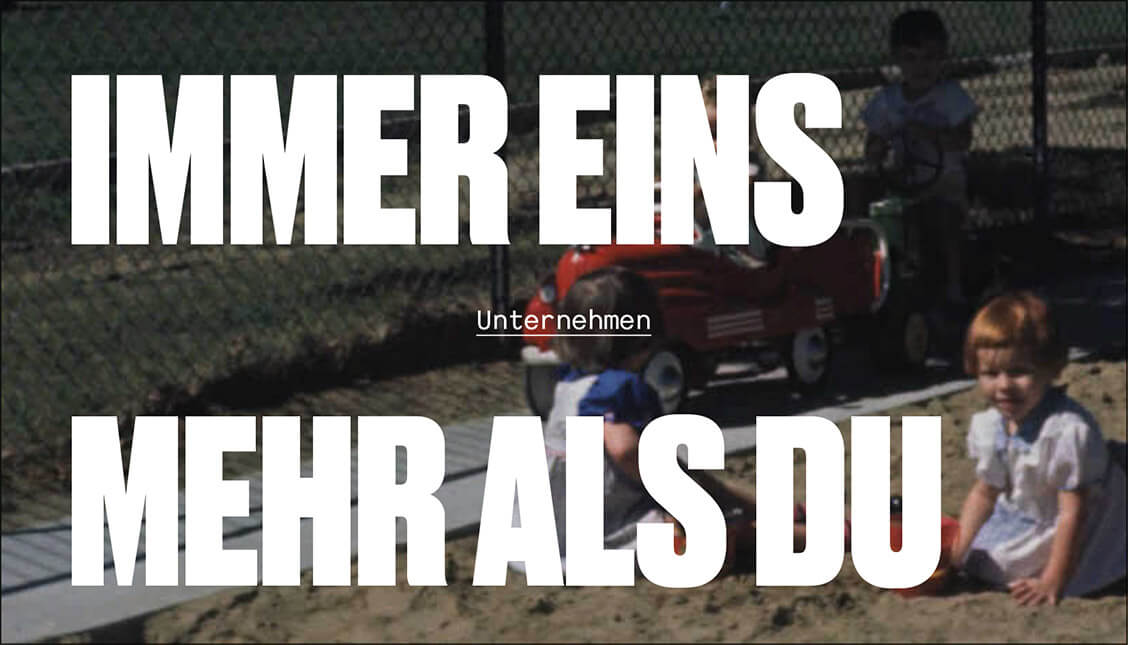
In the next level down on the homepage, the contact options via e-mail, telephone or post are placed in the "Company" item on the first information level, strikingly across the entire view width, and further information on the company is placed on the second level, the "Ticker". The ticker information, reduced to the essentials, runs through the image and is supplemented thematically by a large image in the background. If the customer still has any questions, he has direct access to various communication interfaces or points of contact with the company, which can optimally serve the respective request through a personal contact and create a brand experience tailored to the customer.
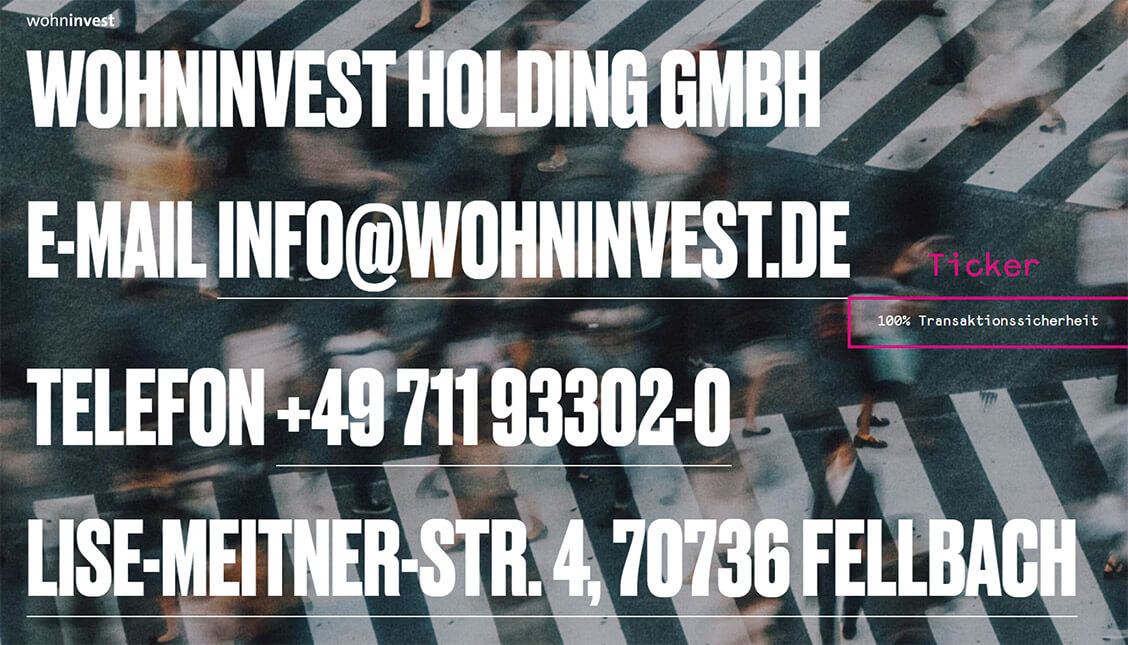

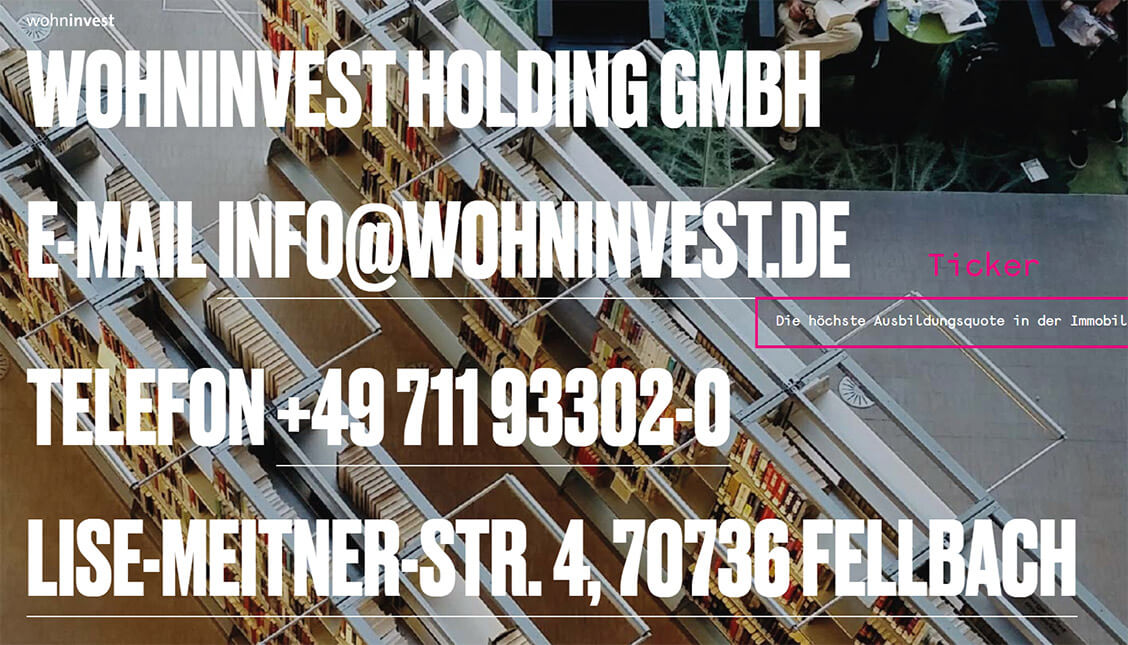
Power-Point
With presentation materials such as PowerPoint files, headings are also used strikingly against a full-surface background and general information such as date, company, etc. is placed on the second information level. In the content area, the headline and ticker move to the top or bottom of the page and thus form the stage for the respective information.
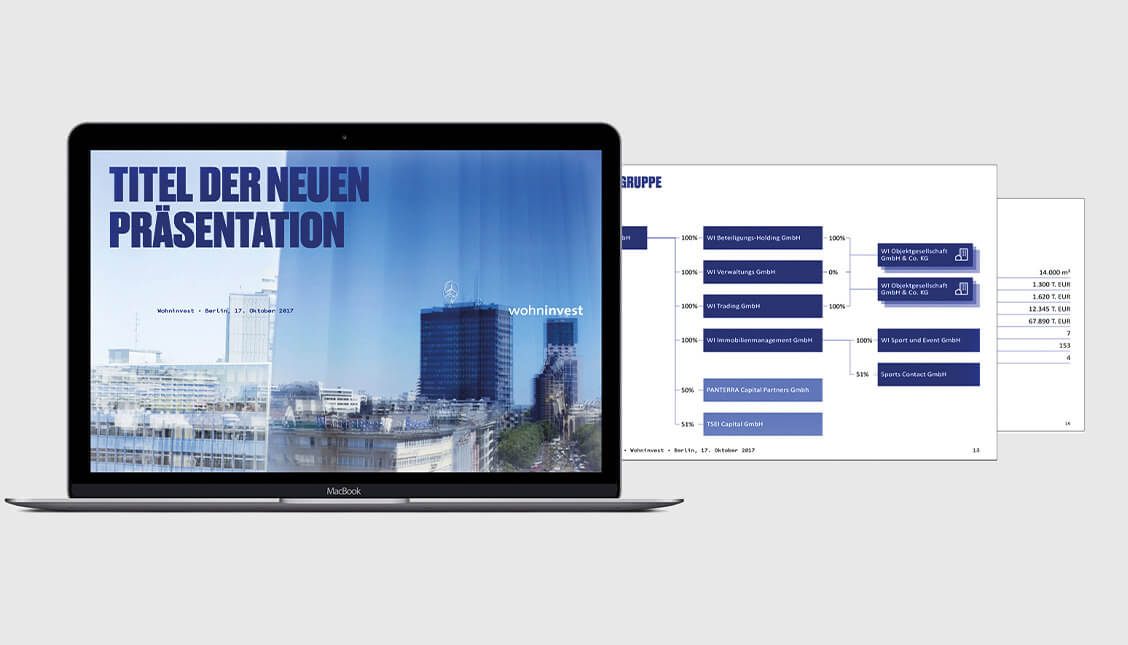
Business cards
In the case of business cards, the respective person with the postal address is positioned strikingly on the first information level on the reverse side and the personal contact options on the second "ticker level". The front uses the full-surface background colour to place the company logo as a "ticker".
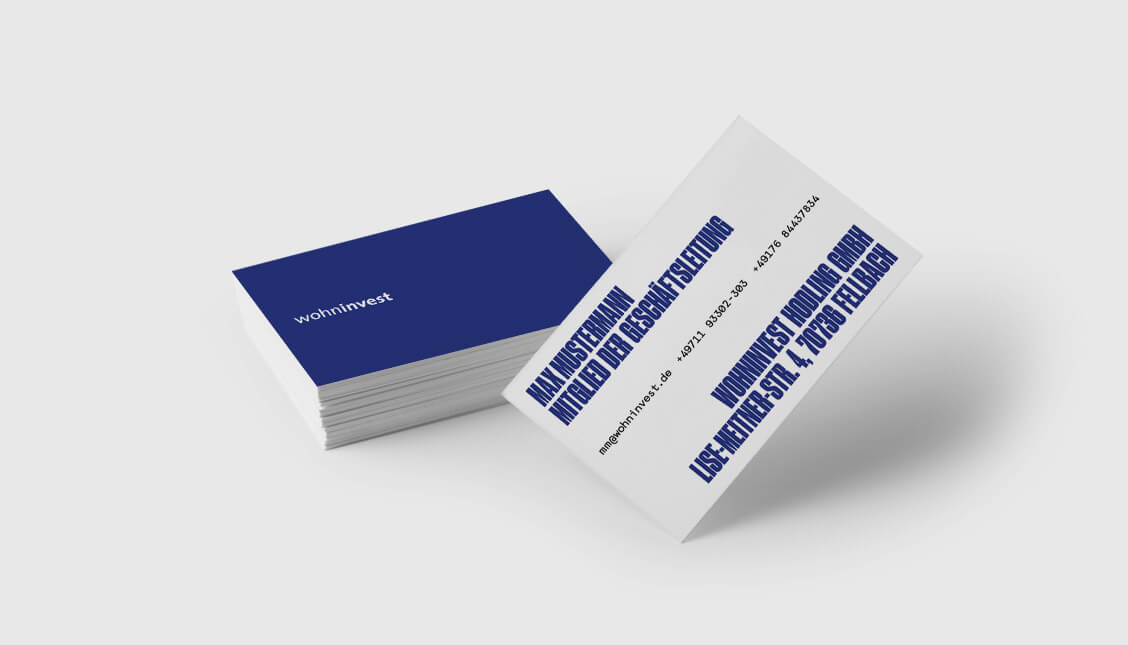
Stationery
The stationery exclusively uses the first, striking level of information and arranges it on the back to create the largest possible stage for the relevant information. This gives the stationery a completely new structure, as it is dedicated solely to the addressee on the front and offers all relevant points of contact (postal address, telephone, etc.) on the back, in order to be able to establish a dialogue in the simplest possible way if required. As with the image brochure, the translucency of the letterhead subtly refers the viewer to the information on the back.
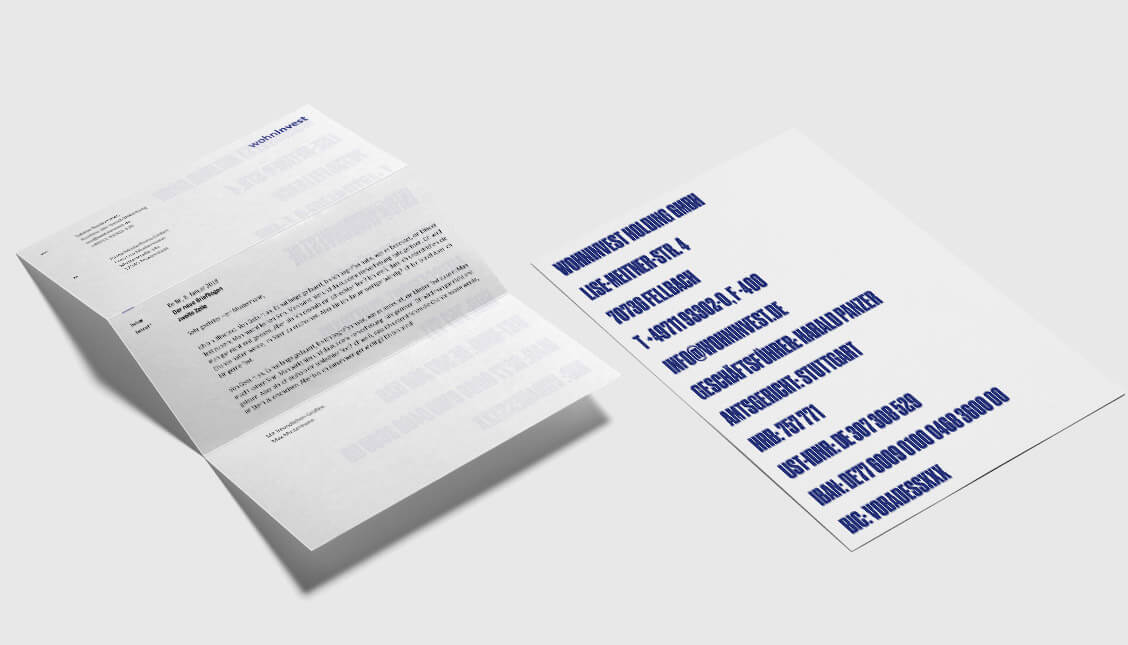
Bottom line
In summary, it can be said that in times of digitalization the dialogue between customer and company is increasingly coming to the fore. Successful brand communication is no longer determined by the company alone, but by the points of contact with the customer. Instead of sales figures, product innovations or customer evaluations as a yardstick for corporate success, the speed and quality of communication between companies and customers is becoming increasingly important. For successful brand communication, analog and digital communication channels are linked and holistically aligned with the customer.



